Latin America
Related: About this forumMore evidence that women reigned in ancient Peru
Stuart Braun
8 hours ago8 hours ago
Archaeologists have uncovered a throne room and detailed wall paintings indicating that a woman likely ruled Moche society in Peru over 1,300 years ago.
An archaeological site has yielded further evidence that a matriarch once commanded the ancient Moche civilization on Peru's northwest coast.
The pillared room unearthed at the Panamarca archaeological site contains a worn stone throne and elaborate wall murals portraying a powerful woman with a crown receiving visitors. The figure is further interlaced with a crescent moon and sea creatures.
Dating back more than 1,300 years, the discovery might indicate that a woman who was "possibly a ruler" dwelled in the space, said Jessica Ortiz Zevallos, research director for the archaeological project.
"A throne room for a queen has never been seen before at Panamarca, nor anywhere else in ancient Peru," said a September statement from the site team announcing the find, which was made in July.
Panamarca is the southernmost center of Moche society, which made their homes in the coastal valleys of northern Peru between about 350 and 850 CE.
A matriarchal society?
The discovery echoes the Lady of Cao, a woman who is said to have governed Moche 1,700 years ago. Her face was reconstructed in 2017 using 3D printing based on the skull of an ancient mummy discovered over a decade before in the Chicama Valley, described as the heartland of Moche culture.
The Lady of Cao was described by archaeologists as the first-known female governor in Peru.
More:
https://www.dw.com/en/more-evidence-that-women-reigned-in-ancient-peru/a-70559915

Painted architecture within the Hall of the Moche Imaginary. Credit: Lisa Trever / Pañamarca Digital / Denver Museum of Nature & Science

Archaeologists discover painted throne room for a Moche female leader in Peru
Archaeologists Michele Koons and Lisa Trever study the painted architecture of the Hall of the Braided Serpents. Credit: Rick Wicker / Pañamarca Digital / Denver Museum of Nature & Science

The interior of the throne was painted with images related to the sea and the night sky—including a crowned woman with a rattle rendered as the crescent moon. The stepped sides of the throne were both decorated with figures of women spinning fiber. Credit: Measured watercolor by Pedro Neciosup / Pañamarca Digital / Denver Museum of Nature & Science
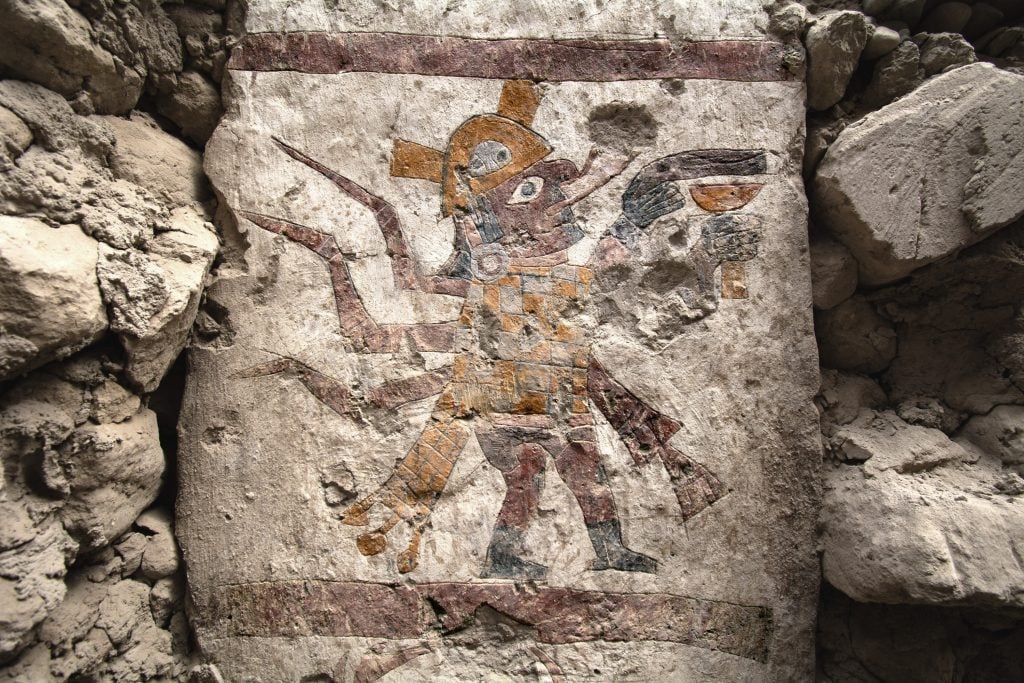
Moche figure with human body and spider features carrying a goblet, painted on a pillar within the Hall of the Moche Imaginary. Photo: courtesy Lisa Trever
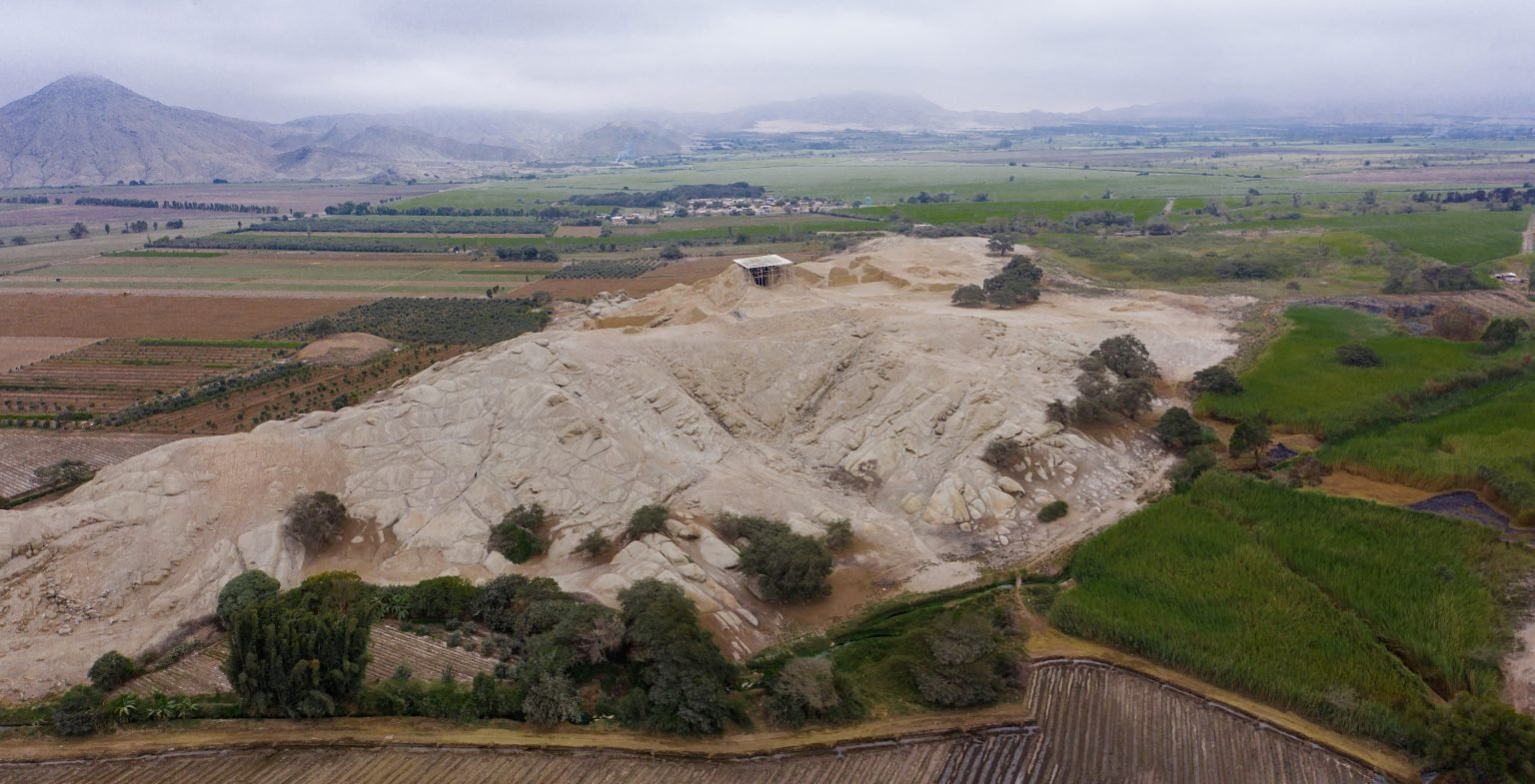
Panoramic shot of the Moche settlement in northern Peru. Photo: courtesy José Antonio Ochatoma Cabrera/Paisajes Arqueológicos de Pañamarca.
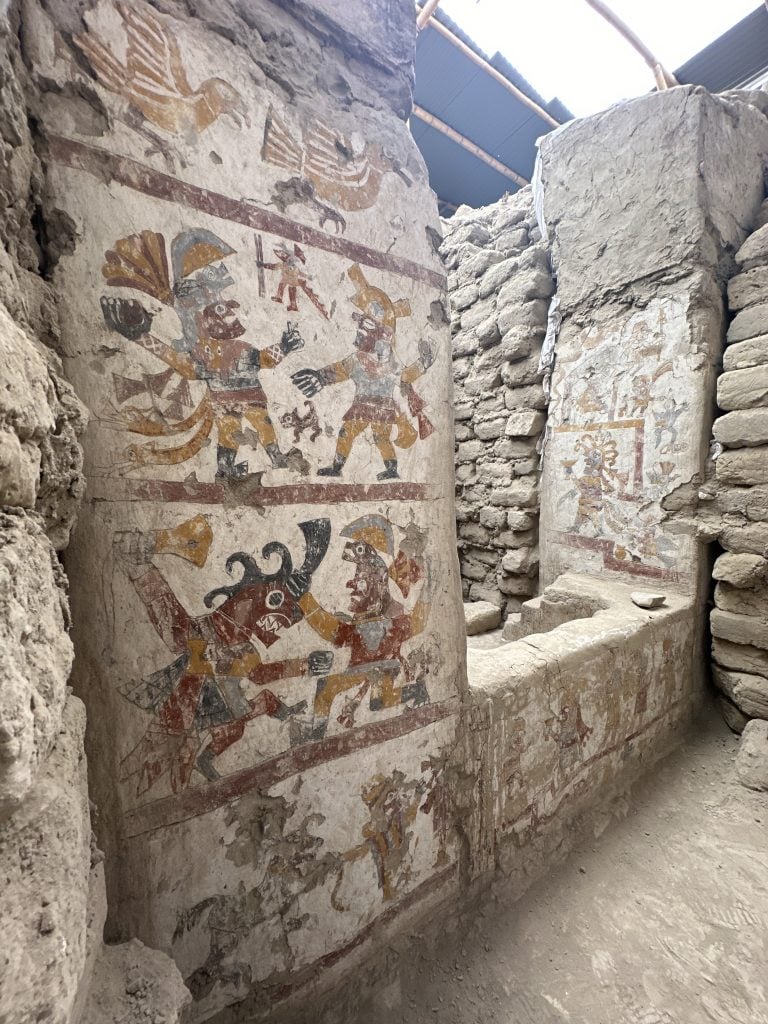
Painted architecture within the Hall of the Moche Imaginary revealed in 2024. Courtesy Lisa Trever.
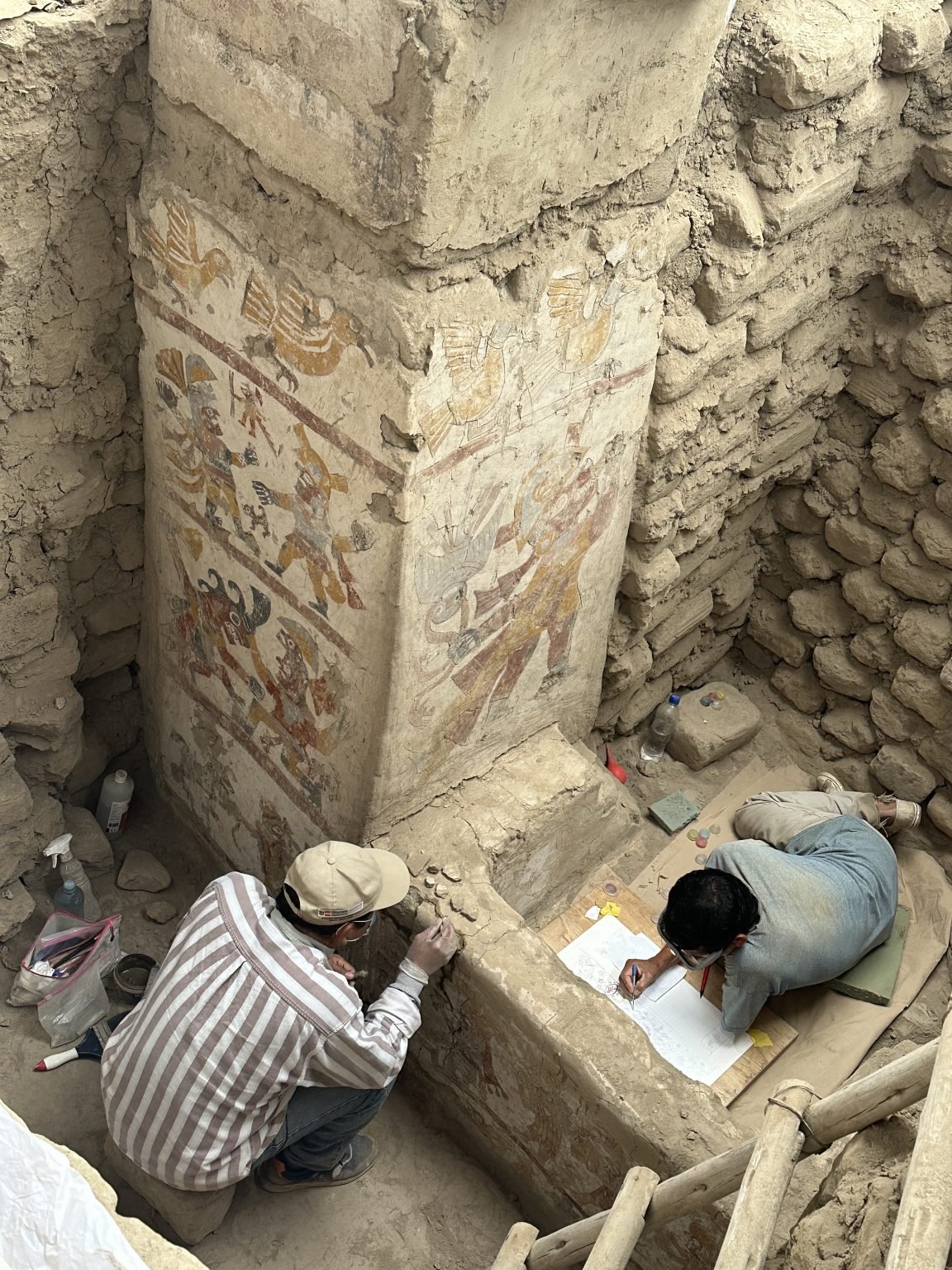
Conservator César Alfredo Velásquez and archaeologist–painter Pedro Neciosup work on the painted throne within the Hall of the Moche Imaginary. Photo: courtesy Lisa Trever.
Judi Lynn
(163,259 posts)Built by the Moche people in the seventh century, the stunningly painted space shows signs of heavy use, including an eroded throne and traces of human hair
Sonja Anderson
Daily Correspondent
October 1, 2024
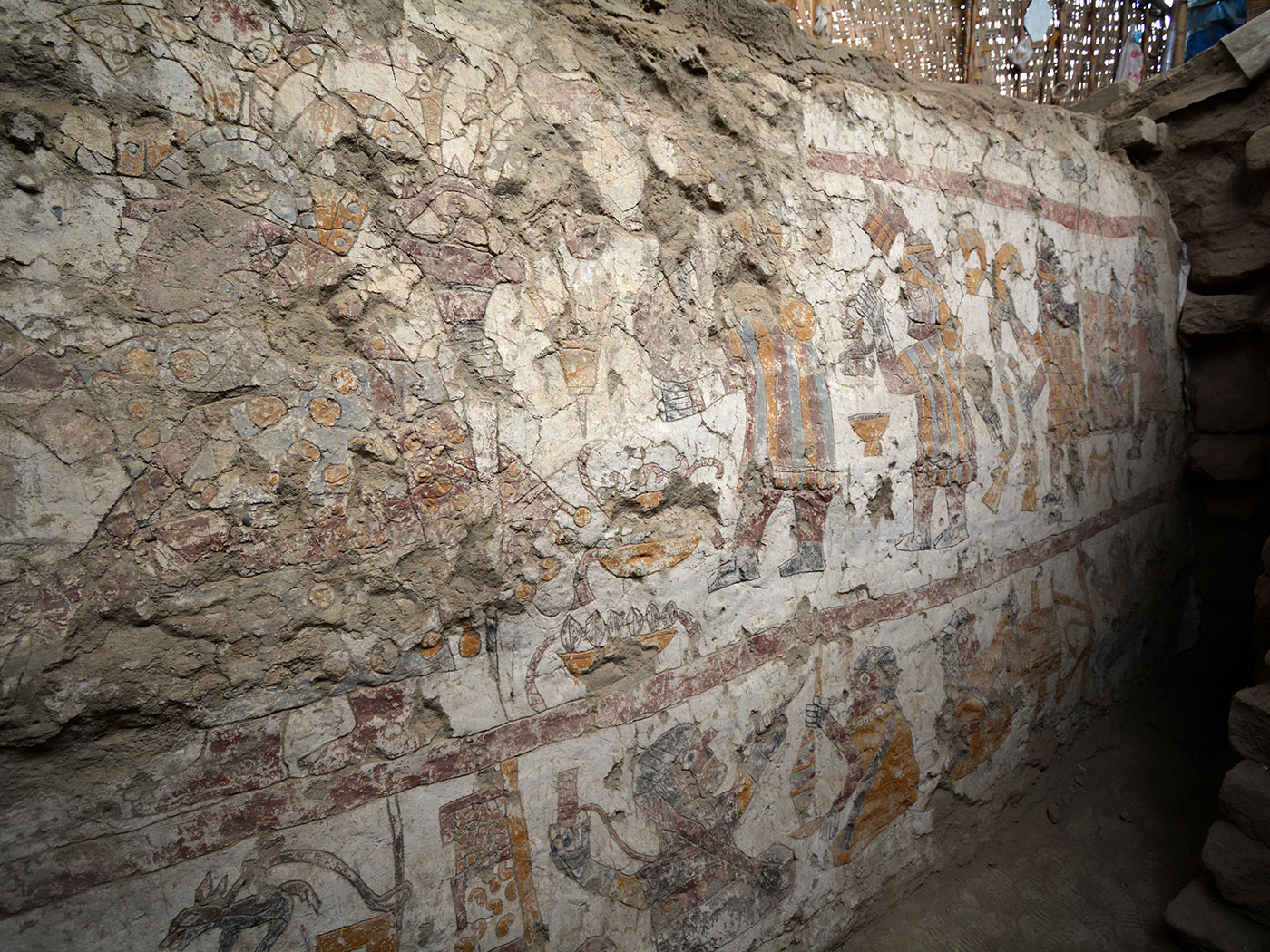
A wall painting of a crowned woman with scepter (upper left), a procession of men behind her carrying objects (upper right) and a textile workshop (below) Lisa Trever
Archaeologists have discovered a richly decorated throne room on the northern coast of Peru that may have belonged to a female ruler of the Moche culture some 1,300 years ago.
The room is located in Pañamarca, an archaeological site built and occupied by the Moche, an Indigenous civilization that flourished between roughly 350 and 850 C.E.—centuries before the better-known Inca built Machu Picchu to the southeast. Rediscovered by archaeologists in the 1950s, Pañamarca contains monumental adobe platforms, walls and temples, as well as elaborate, colorful murals.
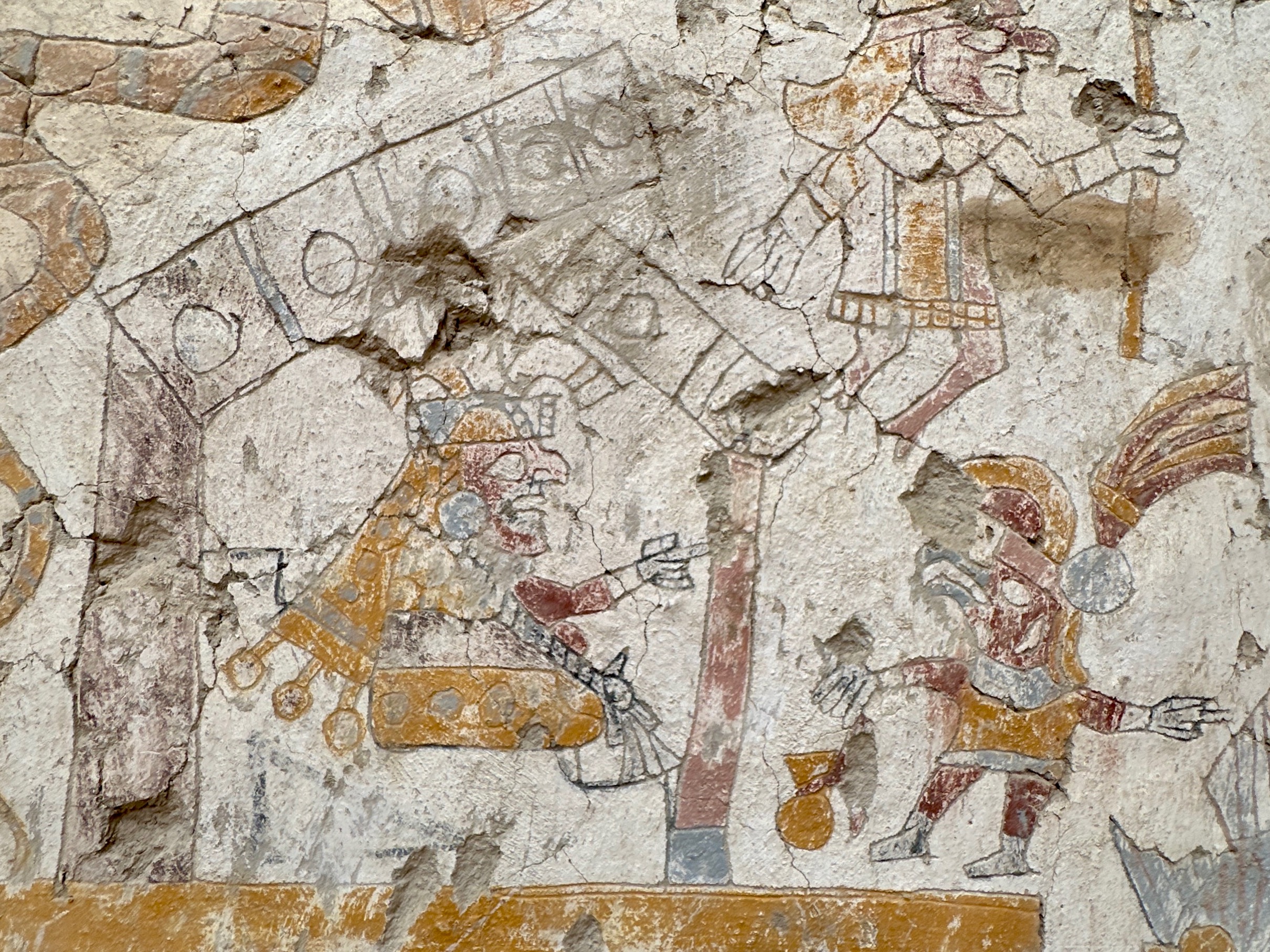
A painting of an enthroned woman speaking to a bird-man occupies a pillar next to the throne in the Hall of the Moche Imaginary. Lisa Trever
Peruvian and American researchers associated with the Archaeological Landscapes of Pañamarca research program have been studying the ancient Moche site since 2018. During their most recent field session, they found an adobe throne room dating back to the seventh century inside Pañamarca’s so-called Hall of the Moche Imaginary. According to a statement, the room’s walls and pillars are covered in painted scenes involving a “powerful woman.” In one work, she receives a line of visitors; in another, she’s seated upon a throne.
These ancient murals “could indicate it was a woman who used the space, possibly a ruler,” project director Jessica Ortiz Zevallos tells Reuters.
The woman in the paintings appears to be linked to the sea, the crescent moon and craftsmanship. One of the recently uncovered murals shows a workshop full of women spinning and weaving, along with a line of men carrying textiles and “the female leader’s crown, complete with her braids,” per the statement.
More:
https://www.smithsonianmag.com/smart-news/see-newly-uncovered-throne-room-peru-may-have-belonged-ancient-queen-180985173/
Deuxcents
(21,744 posts)The Vikings have evidence as they discovered more gravesites. South American sites, besides this one, have also found women were responsible for their people. Another interesting post, thank you